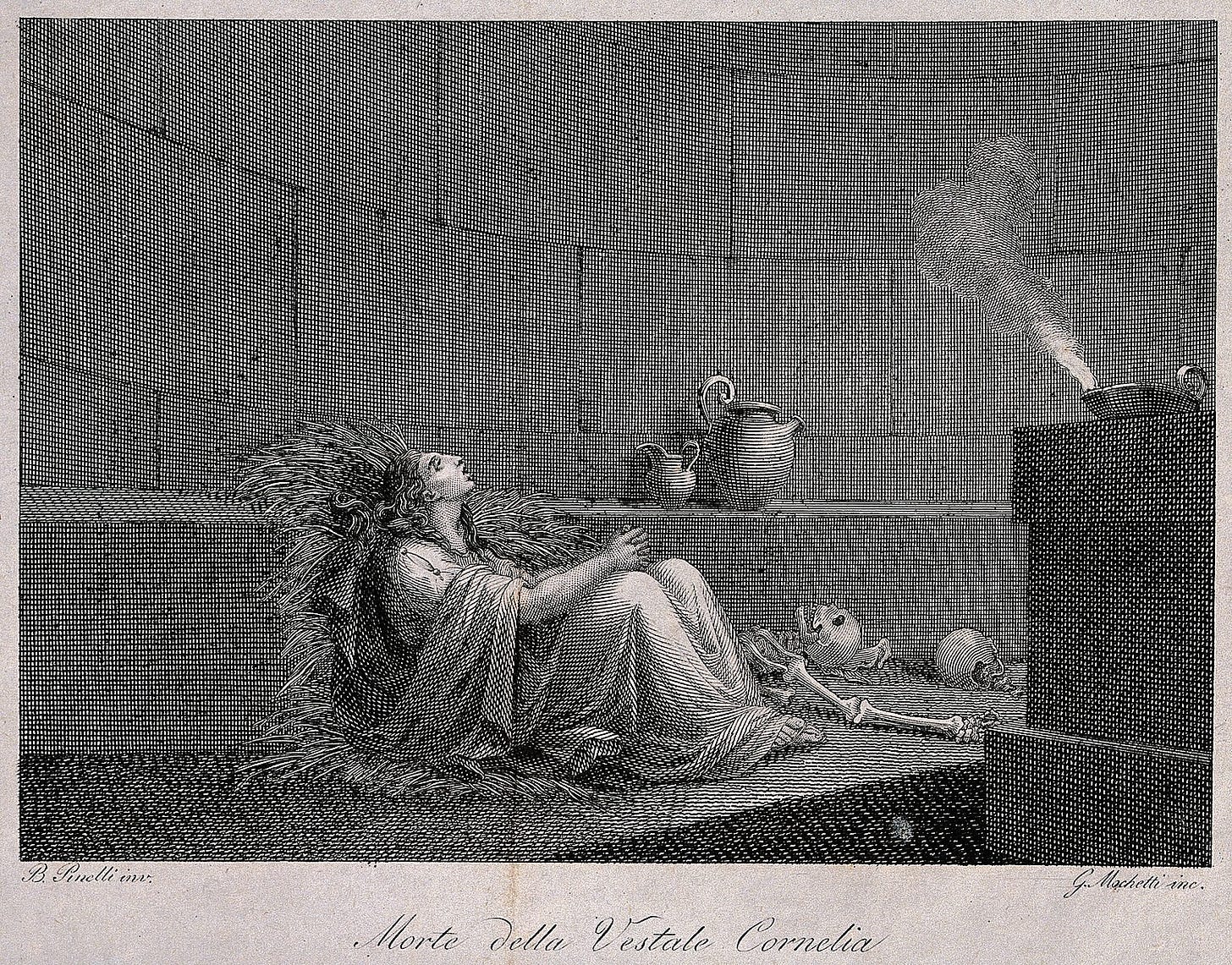Dear Classical Wisdom Reader,
At first glance, it does appear to be a very strange theme for a Classical Wisdom Litterae Magazine. Virgins? Really? While the word still resonates strongly with us today, it is but a mere shadow of the significance it used to carry.
It is a concept that was at the very heart of important historical, religious, and mythological aspects of the ancient world.
We can understand this in a way... the term ‘virgin’ only technically refers to sexually inexperienced women and men, but encompasses a range of traditional and ethical concepts. It evokes a reaction. Perhaps now we think of it more comically, fodder for a Steve Carell movie perhaps, or a throwback to an antiquated generation.
But 2,000 years ago, it wasn’t only a matter of life or death for the individual in question, but of the livelihood of the entire empire.
Moreover, it represented a purity that was essential in their religious world. A perfect example of this are the Vestal Virgins, the revered priestesses who guarded sacred objects at the temple of Vesta. Their virginity was thought essential to Rome's survival... Indeed, if found guilty of unchastity, they were buried or entombed alive.
Of course they also enjoyed certain privileges that were denied to most women. Turns out that, as per usual, the situation is much more nuanced than we would like to initially think... but was it really preferable?
Today’s in-depth member’s article delves into the last moments of Chief Vestal Cornelia and the role of the Vestal Virgins in ancient Rome.
Members can enjoy the full Classical Wisdom Litterae issue, dedicated to Virgins below.
All the best,
Anya Leonard
Founder and Director
Classical Wisdom and Classical Wisdom Kids
P.S. Regular readers may remember our referencing the temple of Vesta here in Tivoli from our Monday mailbag. I’ll make sure to report on more local archeological sites while we are here and Members, you will be invited to exclusive live tours. Details to come!
The Pawn Priestesses
By Mary Naples
When the executioners came for her on that otherwise bright and sunny day, Cornelia (50-91 CE) was many things, but penitent was not one of them. Never one to go gently into the night, Cornelia raised her hands in supplication to her patron goddess, beckoning Vesta—goddess of the home and hearth—to come to her rescue and pleading for mercy from the other gods. But alas, as is customary when appealing to the gods, there was no reply.
Claiming her innocence throughout, Cornelia railed against Domitian (51-96 CE)—emperor at the time. Crying out "Caesar thinks I am impure, I who have performed many rites, by which he conquered and triumphed."
To be sure, living up to his reputation as tyrant, Domitian in his role as Pontifex Maximus (chief priest) convened a session of the sacred college in order to convict Chief Vestal Cornelia of the gravest crime and subsequent punishment of the Vestal order—incestum (unchastity) and live burial. Unlike most criminal proceedings against Vestals, this particular session was conducted without the accused there to defend herself, something so notable that Pliny the Younger (61-113 CE) made mention of it in his description of the entombment of Cornelia.

But who were the Vestal Virgins and why was their sacred oath of chastity so fundamental to the cult? Further, why was the merciless live burial the common method of execution for a fallen Vestal?
Though today many believe that the cult of Vesta had Etruscan origins, according to Roman historian Livy (59 BCE-70 CE)
Keep reading with a 7-day free trial
Subscribe to Classical Wisdom to keep reading this post and get 7 days of free access to the full post archives.




